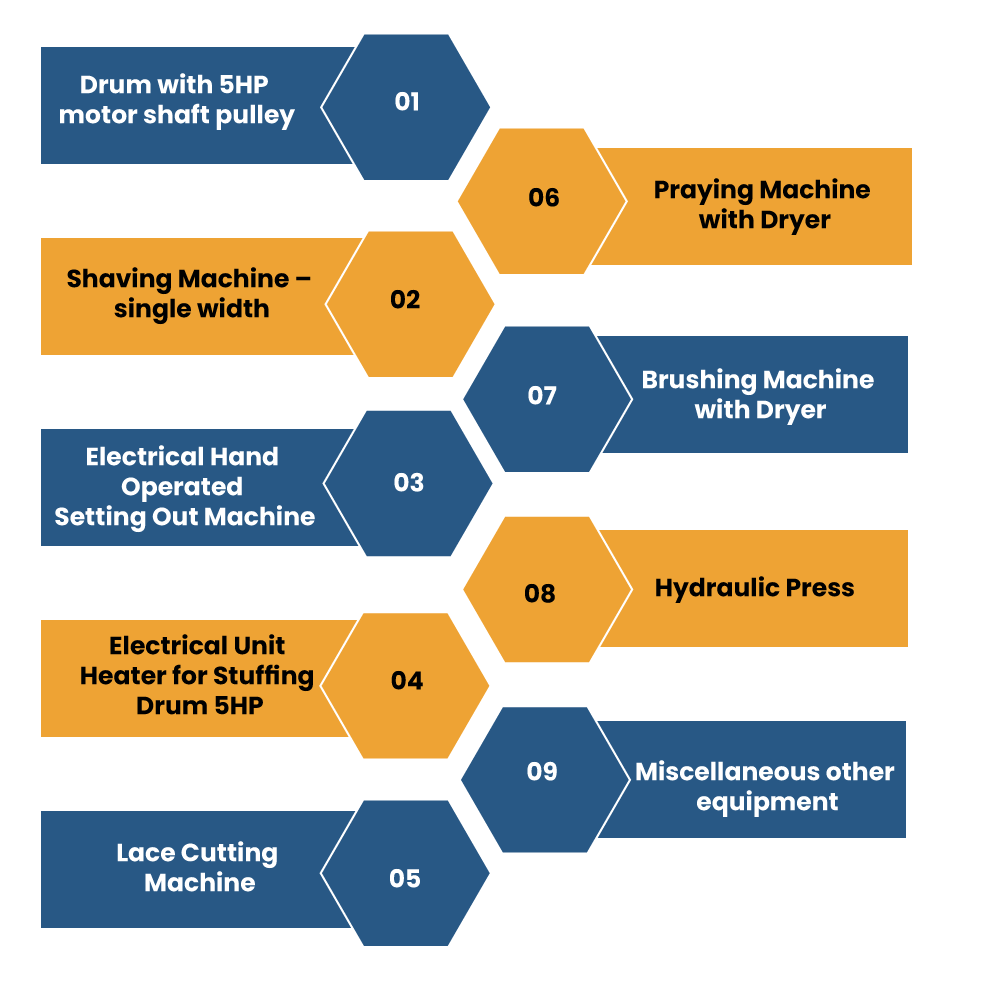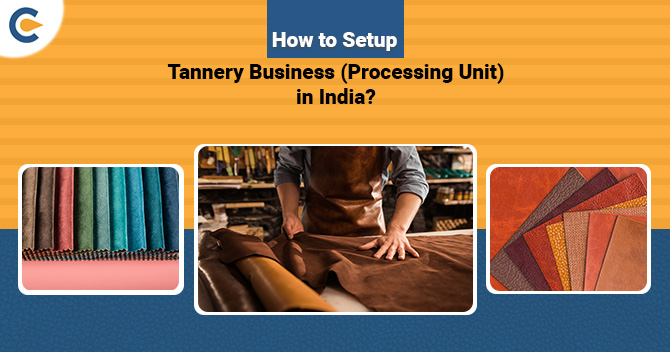Establishing a tannery processing facility is a profitable business in India. Here in this write-up, we aim to render a comprehensive tannery business plan to the startups willing to make their mark in the leather sector.
What is tannery?
A tannery refers to a skin processing facility that produces high-quality leather, which the leather products manufacturing companies further utilise. Moreover, leather tanning is one of the oldest form industries in India.
The livestock industry in our nation adheres to immense potential. That is the reason why hide and skins are available in ample volume here. And hide and skins is the primary product of the meat processing facility.
Smaller animals are said to have skins (sheepskin, goatskin) & large animals are said to have hides (buffalo hide, cowhide). State likes WB, Punjab, Tamil Nadu, UP, UP, Karnataka are the leading leather producing states in India.
Most of the world’s leather is produced from goatskin, cattle hides, & sheepskins. Hides & skins encounter an array of processing phases before turning into final products.
As per your investment potential & the raw material availability, you can get started with the tannery business unit anywhere in the country.
Read our article:Process of Startup India Registration: A Step by Step Guide
An Insight on the Tannery Market Potential
- Typically, the growth of the tannery business is somewhat proportional to the market demand for the finished leather. And the demand pertaining to the finished leather is rising not only in the local market but also in the overseas market. India holds a batch of prominent leather exporters in the world. The primary exporting nations for Indian Finished Leather are Spain, Germany, China, Italy, the USA, and Korea.
- Moreover, there are various parameters for stimulating the growth of the industry. The availability of a cost-effective workforce and the presence of good quality skins and hides are the fundamental reason for the comprehensive development of the leather industry.
- Moreover, the advent of the chrome tanning process and the technical aid from the Central Leather Research Institute are stimulating the growth.
- The worldwide demand for leather items continue to rise every passing day. Additionally, there are various Government-backed schemes for assisting the entrepreneur in the leather industry. Such schemes aim to help businesses in terms of marketing, export and licensing.
Legal Compliances for Tannery Business
Tannery business seeks different types of licenses and permits from the Government authority. But, it also depends on the type of operation. It is recommended to concern with a small business expert before venturing into this domain. Here, we mention some of the fundamental requirements.
Firm incorporation
The first and the foremost requirement are to determine the form of your firm & register the business. It is recommended to start a tannery business as one of the following business forms:
- OPC (One Person Company) (Govern by Company Act, 2013)
- Private Limited Company (Govern by Company Act, 2013)
- Limited Liability Partnership (Govern by LLP Act, 2008)
- Partnership Firm (Govern by Partnership Act, 1932)
All of these business forms revolve around a different set of provisions and bylaws when it comes to incorporation. Presently, the Ministry of Corporate Affairs[1] and ROFs serve as a centralised authority that grants incorporation certificates.
Factory License
Factory license is granted by the Labour authority of the concerned state against a duly filed application and a standard fee.
While applying online, the applicant must submit the following documentation for validation purposes.
- Firm registration List of Partners/Directors
- List of Employees
- List of machinery
- Address proof of the establishment
Consent from the State Pollution Control Board
Leather processing unit generally emits solid and liquid waste in a considerable amount. Hence, such entities cannot perform their undertaking without a legal permit granted by the State Pollution Control Board. The leather processing unit must have an Effluent Treatment Plant to reduce pollution as per the guidelines of the SPCB.
The application for the same can be filed on the local authority website accompanied by the following documents;
- List of machinery (along with the power output and rating)
- Availability of DG (power output and rating)
- Floor plan sanctioned by the relevant personals and authorities
Authorization under Hazardous And Other Wastes (Management and Transboundary Movement) Rules, 2015
Tannery business emits considerable amount of pollutant into the environment in the form in solid, liquid, and gases. Therefore, these entities are mandated to acquire authorization under the said rules via prescribed application from the competent state authority.
GST Registration
GST registration is a mandate in the following conditions:
- If the business generates an annual revenue of more than Rs 40 lakh (Rs20 lakhs for entities in the hilly and NE region).
- If the business conducts inter-state transactions of goods and services
Setup & Machinery for the Tannery Production Unit
- Location selection is the primary factor in establishing up a tannery processing facility. It is recommended to commence the tannery business in an industrial zone. If you set up the facility in the domestic area, you probably come across some objections from nearby residents. Typically, one can establish a small scale tannery in an area of 5000 Sq Ft. Moreover, you must have an additional open sky area within the facility.
- While choosing the space, determine the viability of transportation and skilled labourers. Additionally, water & electricity sources are the primary concern in setting up the leather processing facility. Also, arranging a groundwater supply is another essential requirement for establishing such a plant.
Typical Equipment used in the Tannery Business (processing unit)
You can commence a tannery processing facility in two ways. One is semi-automatic & the other is fully automated. But, it is advisable to set up a facility on a fully automatic basis. Make sure the procure machinery from a trusted machinery manufacturer. Here we mention a list of some fundamental equipment that propels the tannery processing plant.


Process Relating to the Finished Leather Manufacturing Technology
Step I: Procure skins from reliable sources.
First of all, you need to arrange the wet blue skins from reliable sources. But you can also arrange raw skins and hides. After the procurement of the said items, you have to classify the skin.
Step II: Re-tanning
This entails re-treatment of the wet-blue skins.
Step III: Pre-finishing
In this phase, skins are “horsed up”, dyed, stretched, dried out via hot air, and finally ironed.
Step IV: Finishing:
This phase entails classification & cutting, spraying & final conditioning. It includes buffing, staking, & milling. The final operations are executed dry.
Raw Materials used for running Tannery business processing unit
The primary raw material required to run a tannery processing unit is Wet blue hides. Apart from that, you have to procure Sodium bicarbonate, Lacquer emulsions, Formaldehyde, Sodium acetate, and Dyes (different colours).
Conclusion
In the purview of the past and recent trends, the tannery business (processing unit) will continue to experience positive push owing to massive domestic demand. Although the tannery production business seeks considerable investment, it can act as a stable source of revenue for the business owners for years to come.
Read our article:Benefits of Startup India Registration in India











